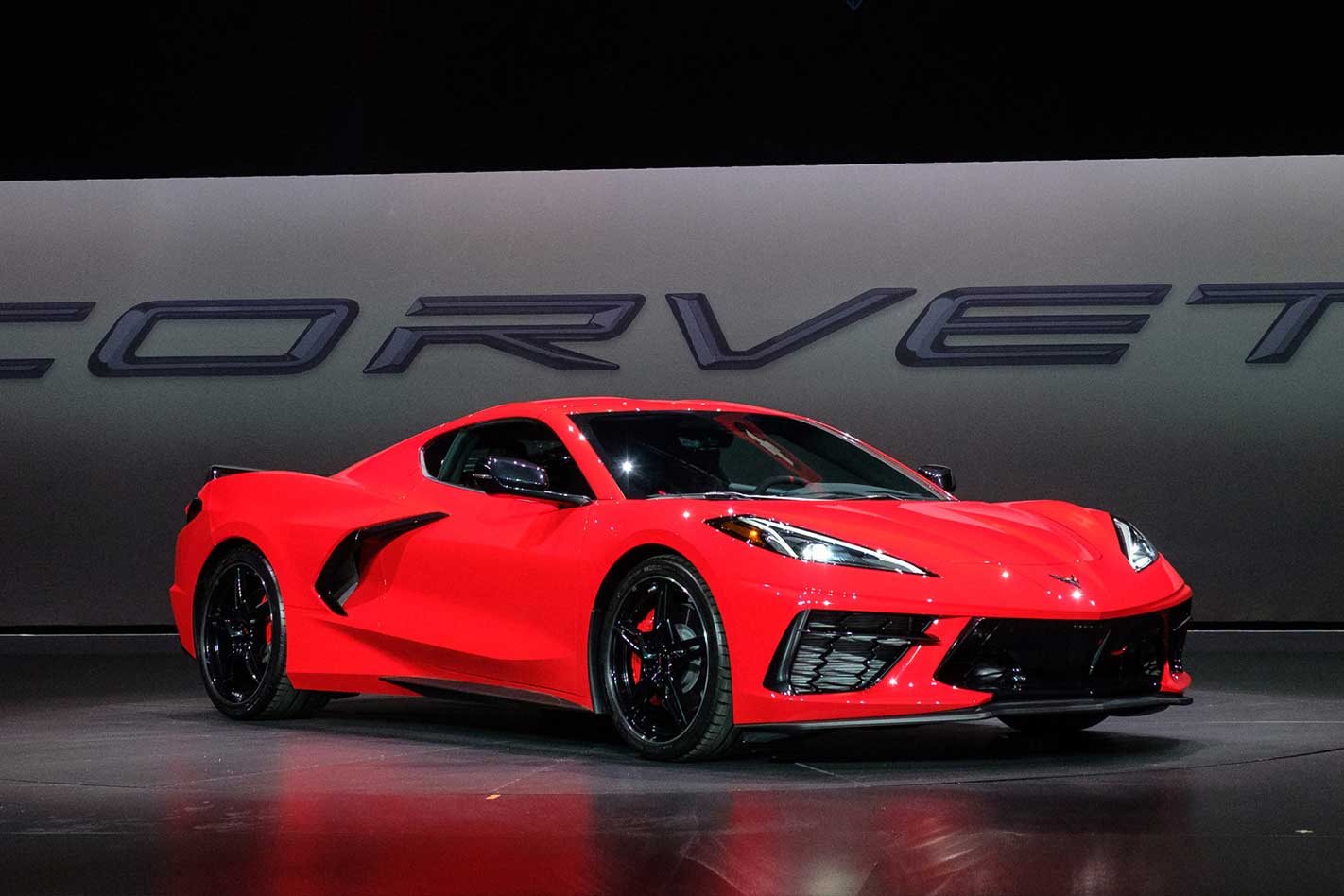The automotive world’s worst kept secret is now officially confirmed: the Chevrolet C8 Corvette is a mid-engined sports car. And it’s coming to Australia, built by the factory in right-hand drive.
It’s the quickest and most powerful base Corvette ever and, following seven generations of front-engine/rear-drive, it turns the concept of Chevrolet’s iconic sports car on its head in an effort to lift performance and dynamics to new heights.
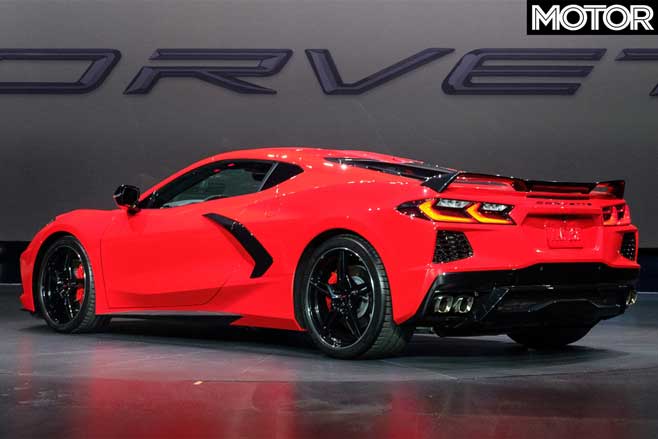
In a statement, Dave Buttner, Chairman and Managing Director of Holden, said: “The news that Corvette will now be built in right-hand drive for the first time ever – and will be exported to Australia – is hugely exciting for our team at Holden and any Australian who loves high performance cars.”
At the heart of the C8 Corvette is a new 6.2-litre naturally aspirated V8 dubbed the LT2. When fitted with the performance exhaust as part of the Z51 Performance Package, it produces 369kW at 6450rpm and 637Nm at 5150rpm.
The LT2 retains GM’s traditional pushrod, two-valve per cylinder layout but lifts the compression ratio to 11.5:1 and employs dry-sump lubrication to both lower the centre of gravity and prevent oil surge under hard cornering. Active Fuel Management shuts off cylinder 2, 3, 5 and 8 on light throttle loadings.
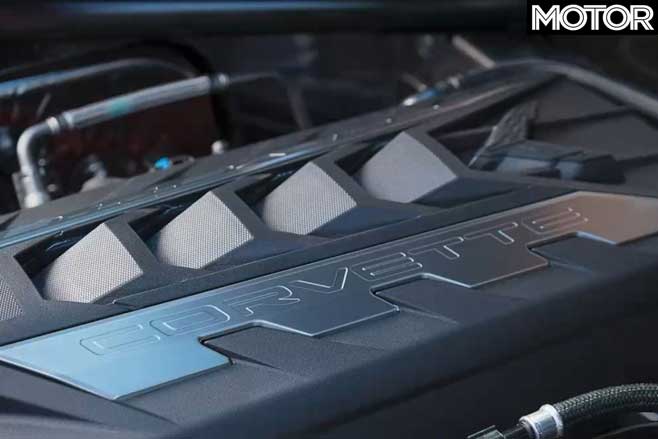
Another radical shift is the lack of a manual transmission for the first time. Instead, Chevrolet developed an all-new eight-speed dual-clutch gearbox with launch control, allowing the C8 Corvette in Z51 guise to bolt to 60mph (97km/h) in “under 3.0sec”. Expect a 0-100km/h time in the 3.2sec range. The driver can manually de-clutch the transmission by pulling both shift paddles back simultaneously.
The C8 chassis is built around a central tunnel, improving torsional rigidity, allowing the creation of left- and right-hand drive variants, removing the need for bulky side sills aiding ingress and egress and providing a pair of luggage compartments, one in the nose and the other aft of the engine. Dry weight is 1530kg.
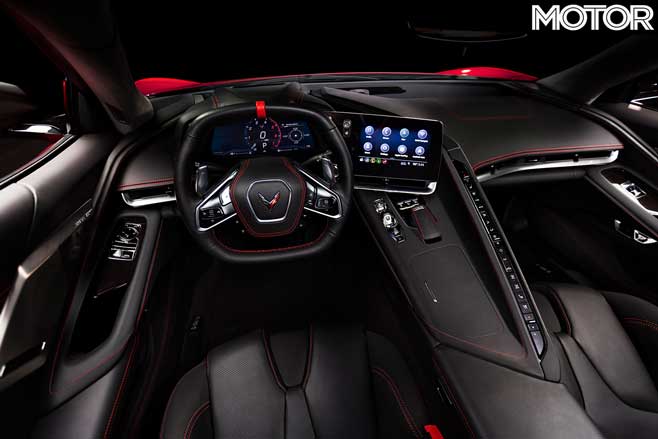
Double-wishbone coilover suspension features front and rear controlling staggered rims, the fronts measuring 19 x 8.5-inch and the rears 20 x 11.0-inch, wrapped in 245/35 and 305/30 Michelin Pilot Sport rubber. Standard brakes are 321mm rotors and four-piston calipers up front and 339mm rotors with two-piston calipers at the back, while the variable-ratio steering has been sharped from 16.25:1 to 15.7:1.
An optional Z51 Performance Package enhances the C8’s acceleration and handling, including a sports exhaust, performance-tuned suspension with Magnetic Ride Control adaptive dampers, larger brakes (345mm front discs and 350mm rears with matching four-piston calipers) with greater cooling, a shorter final drive ratio, an electronically controlled limited-slip diff, Michelin Pilot Sport 4S tyres, Performance Traction Management ESP program and aerodynamic aids – specifically a front splitter and rear spoiler – which add up to 180kg of downforce.
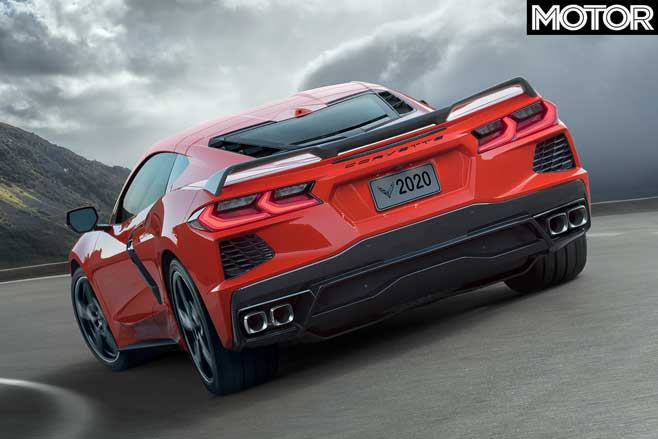
Six drive modes are available to choose from: Weather, Tour, Sport, Track, MyMode, a configurable setting and Z Mode, activated by a button on the steering wheel, which allows adjustment of the engine and transmission settings.
The new mechanical layout has dictated a radically different design to previous Corvettes, with wide rear hips tapering down to a Ferrari F430-esque nose and deeply sculpted sides to feed air into the side intakes. In true Corvette style, the roof is removable to create a Targa-style car.
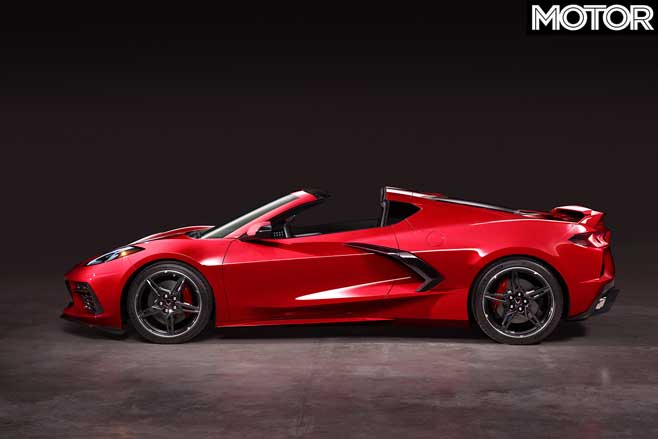
GM’s vice president of Global Design, Australian Michael Simcoe, describes the car thus: “It is now the best of America, a new arrival in the mid-engine sports car class. We know Corvette can stand tall with the best the world has to offer.”
At 4630mm long, 1934mm wide and 1234mm tall, the C8 is similar in size but longer, wider and lower than a Porsche Cayman. There are 12 colours to choose from – white, black, silver, orange, bronze, yellow and a pair of reds, blues and greys.
Inside it’s all about the driver, with a cockpit-like design slanting the infotainment screen and all major controls heavily towards the left-hand side and the passenger effectively cordoned off by a bridge carrying 18 buttons including HVAC controls, seat heating and more.
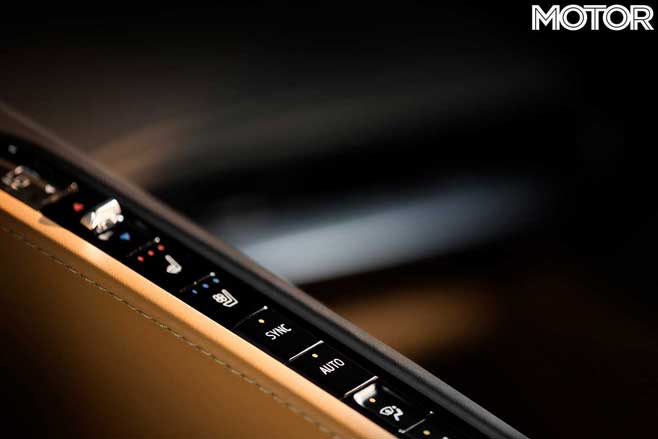
Six interior colours are available – black, grey, ‘natural’, blue and a pair of reds – and three seats, a comfort-oriented GT1, sporty GT2 and heavily bolstered Competition Sport, the latter two with carbon fibre trim.
The idea of a mid-engined Corvette has been around as long as the Corvette itself. In fact, the car was meant to be launched as the C7 before the global financial crisis forced GM to abandon the program as it faced bankruptcy.
Speaking on the Autoline podcast in 2018, GM Vice-Chairman until 2010, Bob Lutz, said: “We wanted to do the original mid-engine Corvette, which was just before the 2007-08 financial meltdown, which cancelled that plan. In the fullness of time we had to cancel that very investment-intensive program and we had to do one more iteration off of the C6, which turned out to be the C7.”
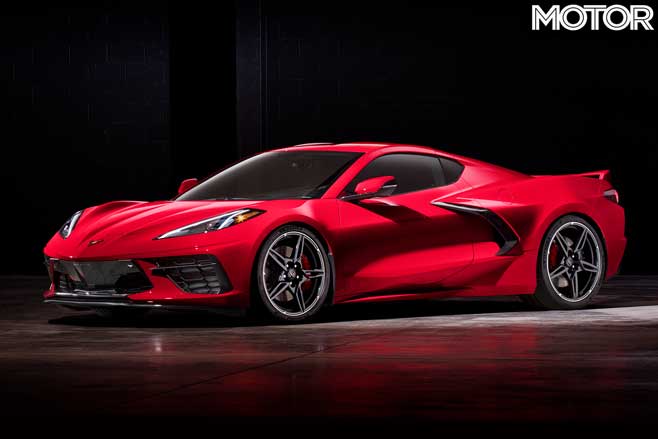
The push for a mid-engine layout came from Corvette Chief Engineer Tadge Juechter, who created a presentation detailing why the front-engine, rear-drive layout had been developed as far as it could go, culminating in the 476kW/819Nm ZR1.
Chevrolet announced at the global reveal that US C8 pricing would start “below US$60,000 (~AUD$85,000)” but Holden told MOTOR it’s too early to comment on any projected local pricing. C8 production begins at the Bowling Green plant in late 2019 with the first Australian cars set to arrive late-2020/early-2021.
“Our team is totally revved up to build on Holden’s performance legacy with the most technologically advanced Corvette ever built,” said Buttner. “We look forward to taking on the European and Japanese performance vehicles with some highly sophisticated American muscle.”


